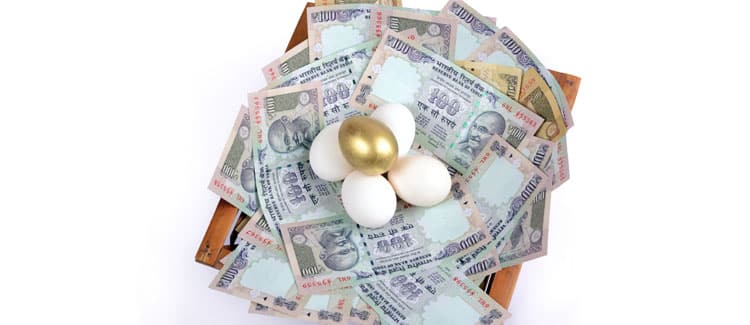Govt Plans Rejig in Personal Tax Slabs to Boost Spending
The Indian government is thinking of rationalizing the personal income tax rates for increasing disposable income, especially for the middle class. This move will drive consumption and growth. This all was informed by two government officials. This move is a resultant of the rates of corporate tax to boost the sentiment and investment and make the Indian industry even more competitive.
The officers of government are working to simplify the archaic laws of the income tax and rationalize the rate of tax in line with the recommendations of the task force over Direct Tax Code (DTC) that has submitted its reports on 2019 August. The main objective of doing so is to enhance compliance, make taxpayers' lives easy, and expand the tax base.
Further, the officials said that according to the impact of this decision on the revenue, different scenarios will be considered. However, the idea of the same is to provide at least 5% points benefiting to every taxpayer.
One option can be to introduce a slab of 10% for the people who are having taxable income that ranges between Rs.5Lakh to Rs.10Lakh. Presently, this slab attracts a tax rate of 20%. There are as well some options to remove the cess, many tax exemptions, and surcharge and hence reduce the rate of tax of the highest slab approximately from 30% to 25% as per the officials.
Presently, the taxable income that is between Rs.3Lakh to Rs.5Lakh attracts a rate of 5%. However, a 20% tax rate is imposed on the second slab, wherein the taxable income is between Rs.5Lakh to Rs.10Lakh and 30% over the income that is more than Rs.10Lakh. The income that is up to Rs.2.5Lakh is tax-free.
The main job of the officials is to present different options without or with the existing exemptions and present this before the competent authority takes a final decision and finalizes the announcement timings.
As per the two officers, the task force’s recommendations on the Direct Tax Code will be helpful. The government has constituted the task force on the Direct Tax Code in November 2017 for reviewing the present income tax legislation and for drafting a new law of direct tax in harmony with the economic requirements of the country.
The experts expect some announcement related to this before Diwali, so that the demand can be created instantly and which can boost the consumption and resultantly its growth. The economic growth of India has slowed down in six years and in the June quarter, it was 5% low, which is the fifth quarterly straight decline in the growth.
The senior director of Deloitte India said that the translation of the reduction in personal income tax for pushing the demand and its consumption is fast because it leaves some extra money in the taxpayer's pocket. The government will have to weigh properly the figures of its revenue and aspects of fiscal deficit.
Naveen Wadhwa, Taxmann’s DGM, explained the requirement of this move by pointing out the reduction in corporate tax will help manufacture companies; however, it may not help boost the demands of consumers. When more income is available to the taxpayers, then it will motivate consumption. In this way, the government should consider reducing the rate of personal tax.
The Finance Minister, on 20th September, announced the slashing of the rates of corporate taxes for the domestic manufacturers from thirty percent to twenty-two percent. On the other hand, for new manufacturing companies, the IT rate was reduced to 25% to 15% without any claimed exemptions.
SR Patnaik, head taxation and partner of Cyril Amarchand Mangaldas said that the government has taken many measures for boosting the economy which also includes recent announcements related to slashing in the rates of corporate tax. He further said that to provide confidence to the individual taxpayers, the rationalization of personal tax rates will be a good idea and which may create an optimistic environment to provide the required stimulus to the economy.
As per Wadhwa, it as well makes complete sense to maintain parity between corporate and individual taxpayers according to the rates.
Helpful Resources: Online Income Tax Calculator
˜The insurers/plans mentioned are arranged in order of highest to lowest first year premium (sum of individual single premium and individual non-single premium) offered by Policybazaar’s insurer partners offering life insurance investment plans on our platform, as per ‘first year premium of life insurers as at 31.03.2025 report’ published by IRDAI. Policybazaar does not endorse, rate or recommend any particular insurer or insurance product offered by any insurer. For complete list of insurers in India refer to the IRDAI website www.irdai.gov.in
*All savings are provided by the insurer as per the IRDAI approved insurance plan.
^The tax benefits under Section 80C allow a deduction of up to ₹1.5 lakhs from the taxable income per year and 10(10D) tax benefits are for investments made up to ₹2.5 Lakhs/ year for policies bought after 1 Feb 2021. Tax benefits and savings are subject to changes in tax laws.
¶Long-term capital gains (LTCG) tax (12.5%) is exempted on annual premiums up to 2.5 lacs.
++Source - Google Review Rating available on:- http://bit.ly/3J20bXZ


- SIP Calculator
- Income Tax Calculator
- Compound Interest Calculator
- NPS Calculator
- Show More Calculator
Income Tax articles
Explore the popular searches and stay informed
- LIC
- Investment Plan
- Annuity Plan
- Child Plan
- Pension Plan
- ULIP Plan
- Child Investment Plan
- SIP
- LIC Calculator
- SIP Calculator
- SBI SIP
- ULIP Calculator
- Sukanya Samriddhi Yojana
- Best SIP Plans
- Retirement Planning
- SBI SIP Calculator
- HDFC SIP Calculator
- Sukanya Samriddhi Yojana Interest Rate
- NPS Interest Rate
- Deferred Annuity Plans
- SBI Annuity Deposit Scheme Calculator
- Immediate Annuity Plans
- Post Office Child Plan
- Prime Minister Schemes For Boy Child
- Government Schemes for Girl Child
- 50k Pension Per Month
- Atal Pension Yojana Calculator
- Best Pension Plan in India
- CIBIL Score
- 1 Crore Term Insurance
- Best Term Insurance Plan
- Term Insurance for Women
- Term Insurance for NRI
- Term Insurance
- Term Insurance Calculator
- Life Insurance
- Term Insurance with Return of Premium
- Whole Life Insurance
- Term Insurance vs Life Insurance
- What is Term Insurance
- Life Insurance Calculator
- 5 Crore Term Insurance
- 2 Crore Term Insurance
- 50 Lakh Term Insurance
- Term Insurance for Housewife
- Benefits of Term Insurance
- Term Insurance Terminology
- Medical Tests for Term Insurance
- Term Insurance for Self Employed
- Claim Settlement Ratio
- 10 Crore Term Insurance
- Term Insurance for Smokers
- 1.5 Crore Term Insurance
- Zero Cost Term Insurance
- FIRE Calculator














